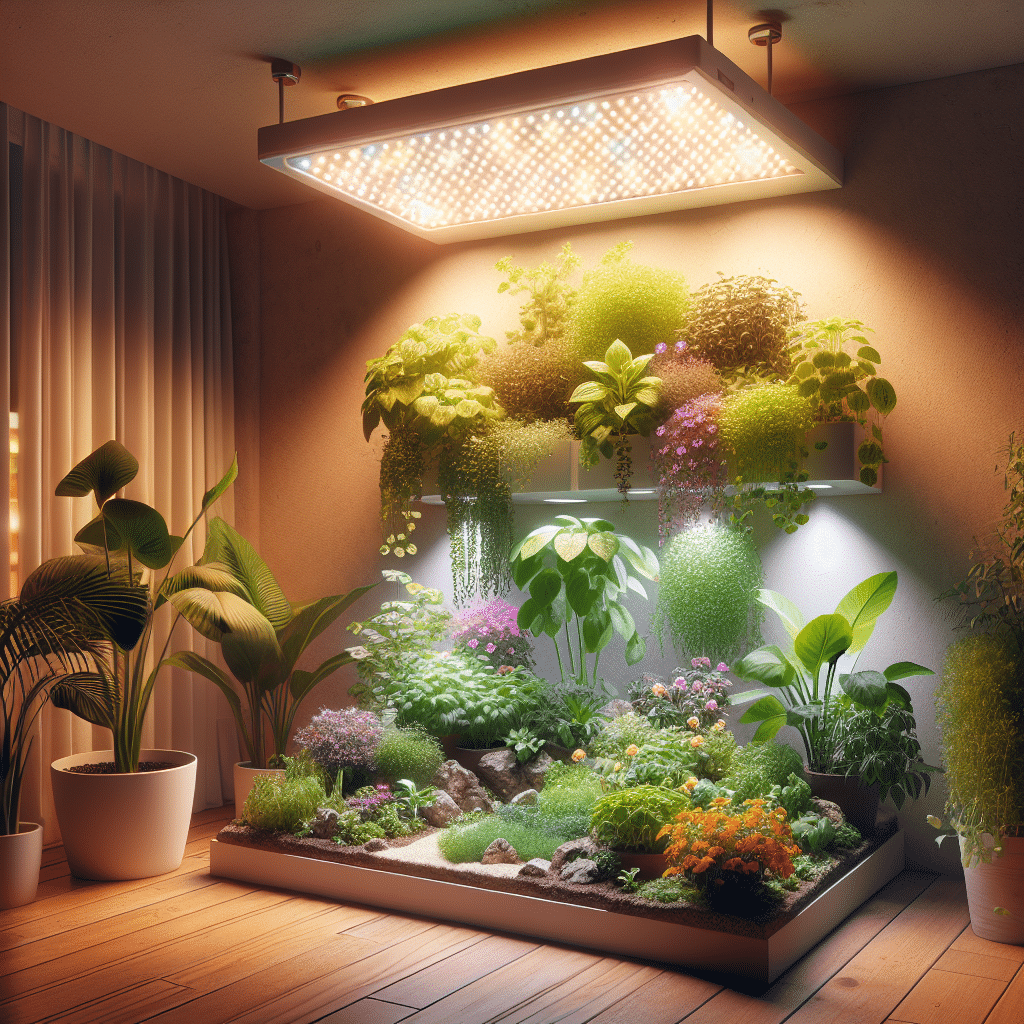Factors to Consider When Choosing LED Grow Lights
When selecting the best LED grow lights for apartments, several essential factors must be assessed:
1. Space and Size:
Consider the available space in your apartment. Measure the area where you plan to place the grow light to ensure it fits well and covers the necessary plant area.
2. Light Spectrum:
Plants require different light spectrums for optimal growth. Full-spectrum LEDs tend to be the best, as they provide both blue (for vegetative growth) and red light (for flowering).
3. Energy Efficiency:
Select energy-efficient LED lights to save on electricity bills; look for lights that offer high output while consuming low wattage.
4. Heat Output:
In an enclosed apartment, insulation is paramount. Choose LED grow lights that produce minimal heat to prevent overheating your living space.
5. Adjustability and Features:
Hybrid LEDs with adjustable spectrums offer greater flexibility for growth stages. Features like dimmable settings can help tailor light levels to specific plant needs.
6. Coverage Area:
Evaluate the light’s coverage depending on the type and number of plants you wish to grow.
Top LED Grow Lights for Apartments
1. Spider Farmer SF Series
The Spider Farmer SF Series includes efficient full-spectrum LEDs, known for their high photosynthetic efficiency.
- Wattage: 100W to 2000W options.
- Coverage Area: Up to 4×4 feet with the 2000W.
- Features: Dimmable options, reflective design.
- Efficiency: 2.7 μmol/J photon efficiency.
2. VIVOSUN VS600 Series
The VIVOSUN VS600 series offers an affordable yet effective way to grow plants indoors.
- Wattage: 600W.
- Coverage Area: 3×3 feet.
- Features: Dual-chip design with high PAR output.
- Efficiency: 1.5 μmol/J.
3. Mars Hydro TS Series
The Mars Hydro TS series is a popular choice due to its competitive price and performance in an apartment setting.
- Wattage: 100W to 2000W.
- Coverage Area: 4×4 feet with the 2000W.
- Features: High-efficiency light spectrum, daisy chain function.
- Efficiency: 2.5 μmol/J.
4. GE BR30 LED Grow Light
For small spaces or apartments, the GE BR30 LED Grow Light is an excellent option.
- Wattage: 10W.
- Coverage Area: Best for small potted plants.
- Features: Adjustable angles with medium base, blends seamlessly into your décor.
- Efficiency: Energy-efficient and low heat output.
5. Horticulture Lighting Group 320
This light is tailored for more serious growers looking for professional quality.
- Wattage: 320W.
- Coverage Area: Up to 4×4 feet.
- Features: Full-spectrum light mimics natural sunlight.
- Efficiency: Exceptional photon output, ideal for all growing stages.
6. Kingbo LED Grow Light
Kingbo provides great value for those just starting with indoor gardening.
- Wattage: 1000W.
- Coverage Area: 3×3 feet.
- Features: Includes both red and blue lights.
- Efficiency: Attractively priced and easy to use.
Installation Tips for LED Grow Lights
1. Light Placement:
For optimum growth, place the LED grow light 12 to 24 inches above your plants, adjusting as they grow taller.
2. Use Timers:
Incorporate timers to automate light schedules, providing plants with a consistent 12-16 hours of light daily.
3. Reflective Surfaces:
Maximize light exposure by using reflective surfaces like mylar or white paint on walls nearby.
4. Regular Adjustments:
Monitor plant growth and adjust the height and intensity of the grow lights periodically to avoid light burn.
Maintenance and Care for LED Grow Lights
1. Regular Cleaning:
Dust buildup can diminish light output. Regularly wipe down the lights with a damp cloth to keep them clean.
2. Monitor Components:
Keep an eye out for any flickering or dimming, indicating that the LEDs may be nearing the end of their lifespan.
3. Check for Overheating:
Even low-heat LED lights can overheat in enclosed spaces. Ensure there is sufficient airflow around the lights.
4. Use Surge Protectors:
Invest in surge protectors to safeguard your lights against power surges, extending their lifespan.
Conclusion
Selecting the best LED grow lights for apartments requires a thoughtful assessment of space, plant needs, and energy efficiency. There are various options available, from compact models for small plants to expansive setups for larger gardens. By considering those variables, one can create a thriving indoor garden without sacrificing space or energy.
